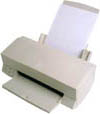The Relative Adverb
Recognize a relative adverb when you find one.
There are only three relative adverbs: when, where, and why. These three words are relative adverbs when they open adjective clauses.
These are the patterns:
Noun of Time + When + Subject + Verb
Noun of Place + Where + Subject + Verb
Noun of Explanation + Why + Subject + Verb
Read these examples:
Harold searched the closet where he had stashed the tear-stained letters from Mona, his ex.
Where he had stashed the tear-stained letters from Mona, his ex describes closet (noun of place).
Harold remembers the day when he first introduced Mona to his twenty-seven cats.
When he first introduced Mona to his twenty-seven cats describes day (noun of time).
The reason why Mona broke up with Harold was his refusal to vacuum the cat hair that floated in clumps on the hardwood floor.
Why Mona broke up with Harold describes reason (noun of explanation).
Often you can exclude the relative adverb. It is understood to be there even if you do not include it in the sentence.
Consider these examples:
Harold longs for the day when everyone else loves cats the same way that he does.
When Harold is depressed, he finds a place where he can buy a creamy vanilla milkshake, which he shares with his cats.
Picking cat hair off his tongue, Harold never understood the reason why Mona resented his feline friends.
Do not confuse a relative adverb with a subordinate conjunction.
When, where, and why are the only relative adverbs. However, these three words also function as subordinate conjunctions. How do you tell the difference?
The key is to identify the word right in front of the when, where, or why. If that word is a noun, then when, where, or why is opening an adjective clause and is thus a relative adverb:
Patricia dreams of the day when her schedule is her own.
Day = noun; when = relative adverb.
Jimmy goes to a school where no team has ever won a championship.
School = noun; where = relative adverb.
Professor Wong wants an explanation why half of Sheila's paper matches Wikipedia entries word for word.
Explanation = noun; why = relative adverb.
If you do not find a noun in front of when, where, or why, then these same three words are subordinate conjunctions:
Patricia was sound asleep when the alarm clock rang.
Asleep = adjective; when = subordinate conjunction.
Jimmy does not know where he should transfer next fall so that his ferocious chess skills can win school tournaments.
Know = verb; where = subordinate conjunction.
Sheila cannot explain why her paper matches Wikipedia entries word for word.
Explain = verb; why = subordinate conjunction.
Do not confuse a relative adverb with an interrogative word.
When, where, and why have a third duty—opening a question. When these words begin a question, you will find an inverted subject and verb and the telltale question mark ( ? ) at the end.
Read these examples:
When did you realize that you wanted to adopt a twenty-eighth cat?
Where did Mr. Cuddles swat his catnip-filled mouse toy?
Why is there cat hair on this hardboiled egg?
Same three words, but a different function this time! In these examples, you have interrogative words, not relative adverbs.
©1997 - 2025 by
Robin L. Simmons
All Rights Reserved.
